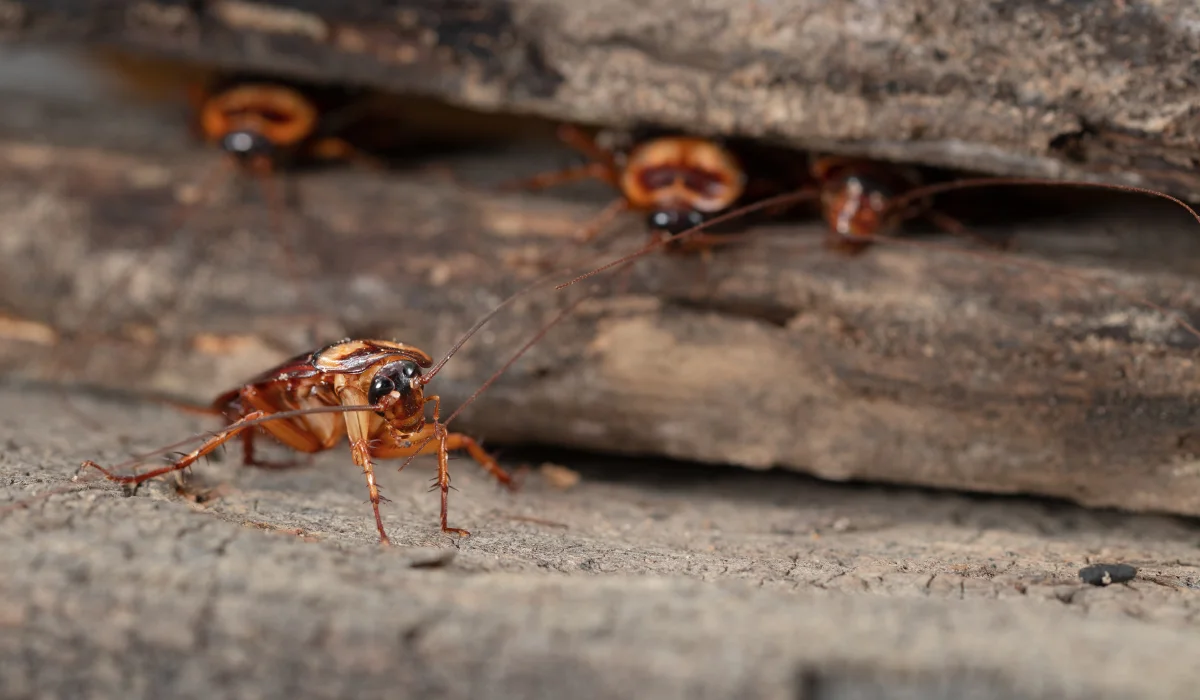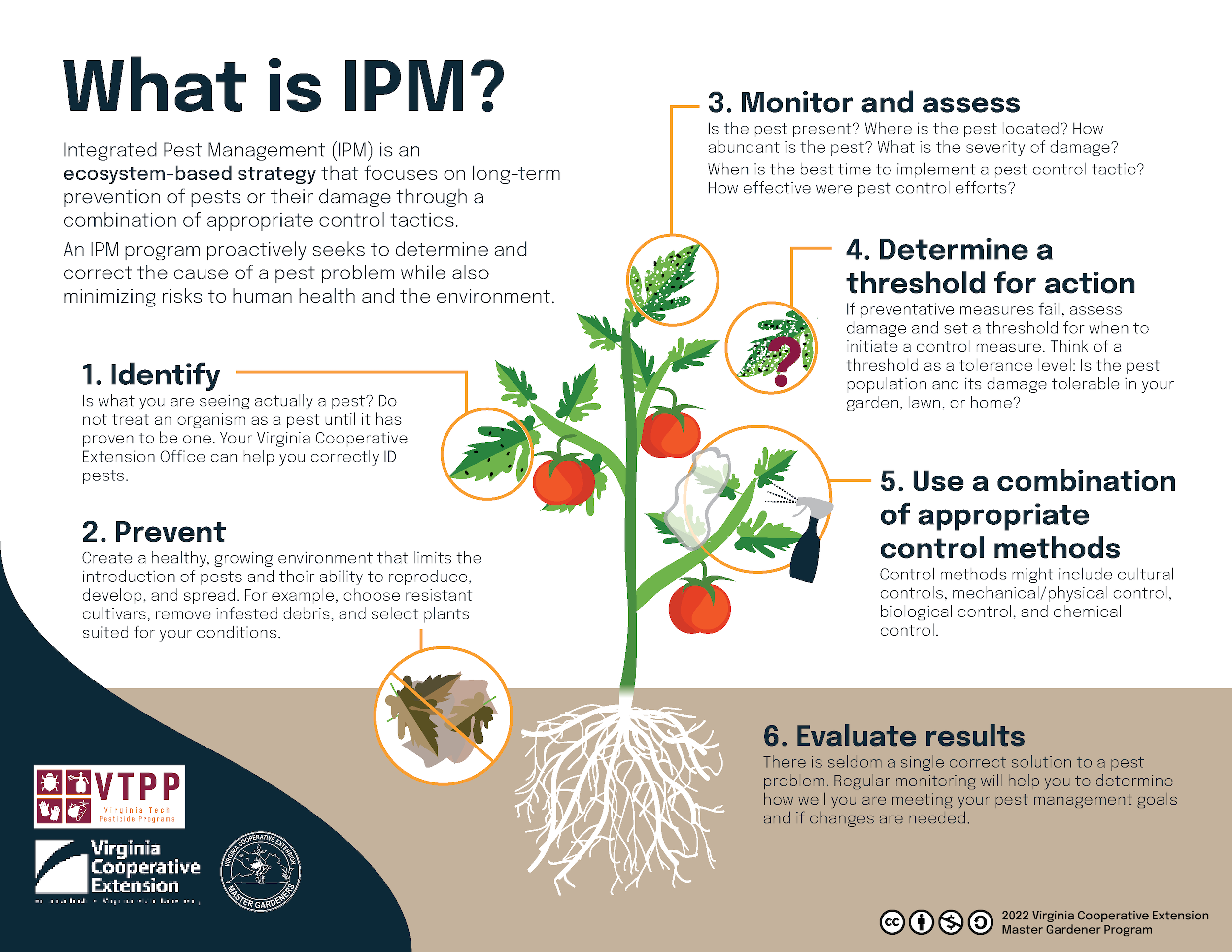More About Pestwise
More About Pestwise
Blog Article
The 5-Minute Rule for Pestwise
Table of ContentsPestwise Things To Know Before You BuyThe Facts About Pestwise RevealedThe Main Principles Of Pestwise The Buzz on PestwiseExamine This Report about PestwiseThe Basic Principles Of Pestwise The 7-Minute Rule for Pestwise

Q. Specify "incorporated bug administration" (IPM) and list numerous possible control techniques that may be made use of in an IPM strategy. A. Integrated bug administration is the incorporating of suitable pest control tactics right into a solitary plan to minimize parasites and their damages to an acceptable degree. Pest control methods might include: host resistance, organic control, cultural control, mechanical control, hygiene, and chemical (pesticide) control.
All About Pestwise
What can you do to keep the parasites you are trying to manage from becoming immune to the pesticides you utilize? A. Bug resistance can be reduced by utilizing integrated insect monitoring and revolving the kinds of pesticides utilized.
Bugs are a vital danger to the farming organization, and incorporated insect monitoring aids farmers address and mitigate these risks. Integrated insect monitoring makes use of several methods in complex, thus being a much more efficient option to the concern. Mosquito Control. Specifically, removing hostile chemical approaches permits decreasing injury to people and the setting by using all-natural and much safer choices instead
Pestwise Things To Know Before You Get This
The objective of incorporated pest management is to reduce this injury and control appropriate problem degrees rather than eradicate all undesirable populations. This is why it is necessary to recognize what steps are warranted in each situation and usage aggressive ones only when other incorporated administration techniques don't function. Integrated administration mitigates the unfavorable consequences of a non-IPM technique, and the primary benefits of IPM Perks of IPM.
A correct understanding of the invasion scope figures out if the problem must be dealt with. are the following components of an IPM program since it is important to recognize if the microorganisms make prospective risks and pick the integrated management options or the details chemical usage. intend to minimize problems by applying various agronomic methods.
Excitement About Pestwise
if prevention was ineffective. click Integrated administration choices in an IPM program begin with more secure to extra hostile ones. Target or broadcast chemical spraying might adhere to hand-operated elimination or trapping that hasn't aided. Those incorporated monitoring aspects help comprehend how to plan and execute an IPM program step by step: Display your plants on a regular basis.

Amongst others, IPM cultural techniques include the complying with area management methods: dirt therapy; selection of appropriate plants; crop rotation; interplanting or strip cropping; selection of planting days; weed control; use of trap plants. Favorable dirt problems speed up plant growth, and energetic plants are much more immune to infestations. Healthy and balanced seedlings and seeds predetermine successful plant development, so it is crucial to choose pest-free planting product with solid origins.
Thus, amongst other applications, crop rotation can be effectively utilized as an incorporated pest administration approach. Vermin spread out slower if rows of various plant types divide their host plants in intercropping or strip chopping, which is additionally used in the integrated insect monitoring system. On the other hand, problems raise when plants of the very same crop type or family grow with each other.
Likewise, potato beetles can hurt growing potatoes, in addition to tomatoes. Planting trap plants in spots is an additional alternative for IPM intercropping. This integrated insect management technique recommends drawing in pests to particular plants and then regulating them with chemical or mechanical strategies. In specific, you can grow soybeans as catch crops for Japanese beetles.
Pestwise Fundamentals Explained
Obstacles are common instances of physical IPM techniques. Allow's take a better take a look at them. Removing or selecting pests out by hand is a time and labor-consuming option that is commonly used in integrated management and natural farming. Fully grown insects or their eggs and larvae are accumulated by hand and destroyed.

Department of Plant Sciences. College of Missouri. Soil solarization is a reliable integrated management strategy to disinfect the area by heating it in an all-natural means. This integrated management technique indicates a common method of damaging insects by predators, parasitoids, microorganisms, and various other organic control agents (also known as hostile organisms). The role of biological control in IPM is to.
The Single Strategy To Use For Pestwise
With time, their populace became an actual problem to farmers together with indigenous kangaroos or dingoes. The cane toad is an additional instance showing integrated biological control failing in this respect when it declined to search the target species and became a parasite itself. Parasitoids create on or within their hosts to ultimately kill them after growing.
Report this page